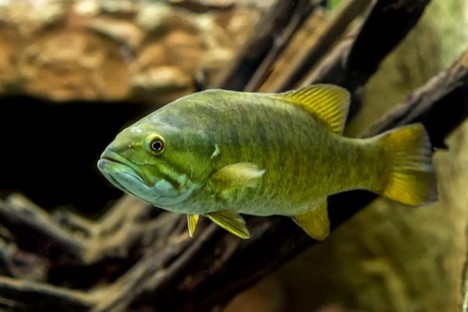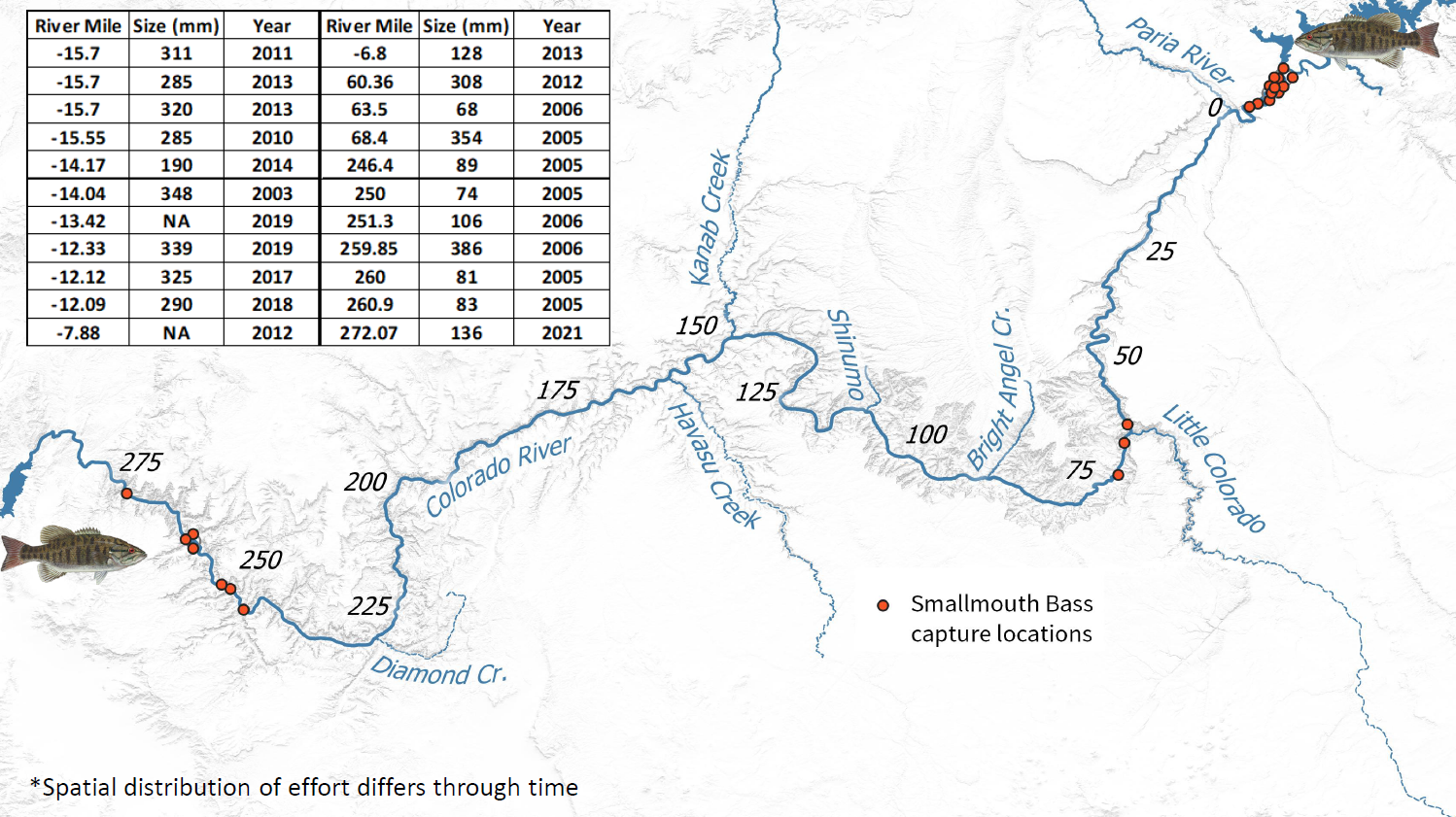Difference between revisions of "Smallmouth Bass Page"
Cellsworth (Talk | contribs) |
Cellsworth (Talk | contribs) |
||
| Line 89: | Line 89: | ||
*[http://gcdamp.com/index.php/Nonnative_Invasive_Aquatic_Species Nonnative Invasive Aquatic Species Page] | *[http://gcdamp.com/index.php/Nonnative_Invasive_Aquatic_Species Nonnative Invasive Aquatic Species Page] | ||
*[https://apps.dtic.mil/sti/pdfs/ADA323294.pdf Habitat suitability information: Smallmouth bass] | *[https://apps.dtic.mil/sti/pdfs/ADA323294.pdf Habitat suitability information: Smallmouth bass] | ||
| + | *[https://gcdamp.com/index.php/The_-12_Mile_Slough The -12 Mile Slough Page] | ||
|- | |- | ||
| Line 194: | Line 195: | ||
Mature females may contain 2000-15,000 golden yellow eggs. Males may spawn with several females on a single nest. On average each nest contains about 2,500 eggs, but nests may contain as many as 10,000 eggs. Eggs hatch in about 10 days if water temperatures are in the mid-50's (°F), but can hatch in 2-3 days if temperatures are in the mid-70's (°F). Males guard the nest from the time eggs are laid until fry begin to disperse, a period of up to a month. [https://www.fs.usda.gov/Internet/FSE_DOCUMENTS/fsbdev3_018493.pdf] | Mature females may contain 2000-15,000 golden yellow eggs. Males may spawn with several females on a single nest. On average each nest contains about 2,500 eggs, but nests may contain as many as 10,000 eggs. Eggs hatch in about 10 days if water temperatures are in the mid-50's (°F), but can hatch in 2-3 days if temperatures are in the mid-70's (°F). Males guard the nest from the time eggs are laid until fry begin to disperse, a period of up to a month. [https://www.fs.usda.gov/Internet/FSE_DOCUMENTS/fsbdev3_018493.pdf] | ||
| + | |||
| + | Bass spawning videos | ||
| + | *[https://www.youtube.com/watch?v=50m8DoiKVVU Video 1] | ||
| + | *[https://www.youtube.com/watch?v=zBDDliPHdVk Video 2] | ||
'''Food: '''The diet of smallmouth bass changes from small to large food items as the | '''Food: '''The diet of smallmouth bass changes from small to large food items as the | ||
Revision as of 10:46, 18 November 2024
|
|
Smallmouth Bass (Micropterus dolomieui)The predatory threat of invasive and large-bodied piscivorous taxa such as smallmouth bass in the upper Colorado River basin is substantial. For example, based on results of a bioenergetics model, Johnson et al. (2008) ranked smallmouth bass as the most problematic invasive species because of their high abundance, habitat use that overlaps with most native fishes, and ability to consume a wide variety of life stages of native fishes (Bestgen et al. 2008). Expanded populations of piscivores such as smallmouth bass are a major impediment to conservation actions aimed at recovery efforts for the four endangered fishes in the upper Colorado River basin (U.S. Fish and Wildlife Service 2002a, b, c, d). [1] |
| -- |
-- |
-- |
|---|
|
|

